In this article:
Postural orthostatic tachycardia syndrome (POTS) is the increase in heart rate (more than 30 beats per minute) after standing without the presence of low blood pressure. You can also feel other symptoms that generally disappear when you sit back down. (1)
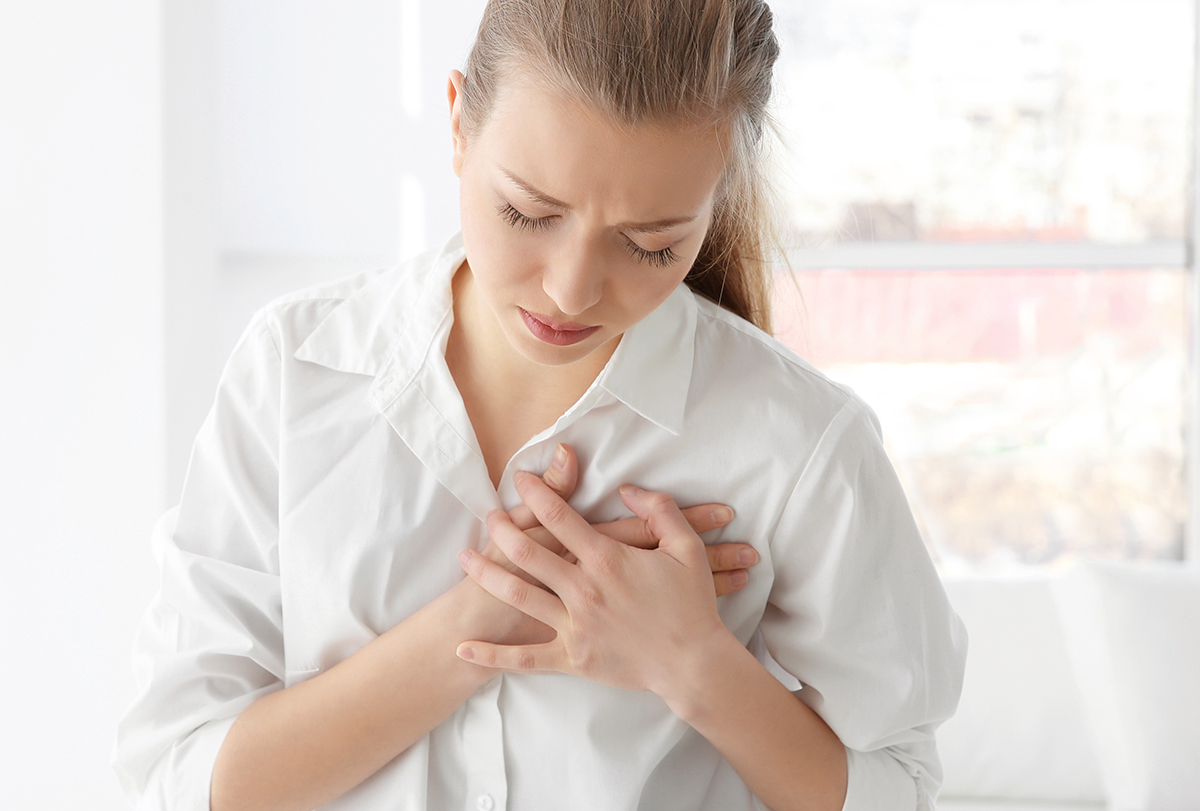
Postural orthostatic tachycardia syndrome can be difficult to detect and can severely affect daily life, especially in the young adult population, by decreasing workflow and productivity.
Many reasons are attributed to the occurrence of postural orthostatic tachycardia syndrome, including an increase in muscle function, lack of exercise, poor flow of blood, and autoimmune conditions. (1)
Symptoms of Postural Orthostatic Tachycardia Syndrome (POTS)
Some of the common symptoms to look out for include: (1)
- Lightheadedness
- Feeling of dizziness
- Palpitations/increased heartbeat
- Fainting spells
- Sleep disturbances
- Brain fog and cognitive impairment
If any of these symptoms last for over a month, it is necessary to consult a doctor.
How to Manage Postural Orthostatic Tachycardia Syndrome (POTS)
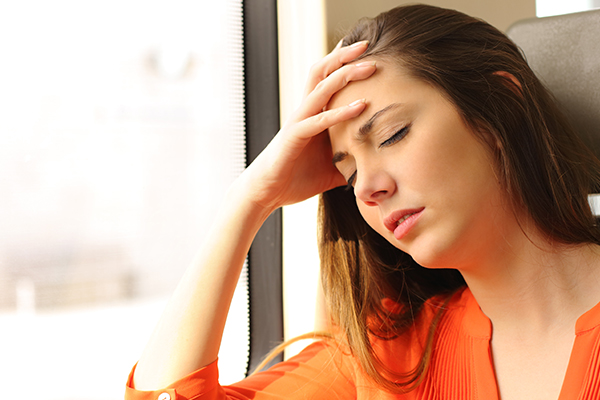
The main method of treating postural orthostatic tachycardia syndrome is by managing its symptoms appropriately.
Studies have shown that interventions provided collaboratively by physical and occupational therapists, psychologists, nurses, and physicians reduce impairments. (2)
Managing symptoms and risk factors associated with postural orthostatic tachycardia syndrome can also help bring down its risk for a healthier outcome. Some of these management strategies include:
1. Increasing salt intake
Experts recommend increasing salt intake to reduce the risk of postural orthostatic tachycardia syndrome. The increased salt retains water in the blood vessels, allowing more blood to reach the brain and heart. (3)
In studies of patients suffering from postural orthostatic tachycardia syndrome, a high-salt diet (300 mEq sodium/day) resulted in decreased heart rate and increased volume of plasma (total fluid volume). (4)
People affected with postural orthostatic tachycardia syndrome may also suffer from gastrointestinal disturbances such as diarrhea or constipation. Modifying the diet to manage these conditions such as increasing probiotic intake, avoiding allergens such as gluten or lactose, and addressing possible micronutrient deficiencies should also help. (5)
2. Drinking enough water
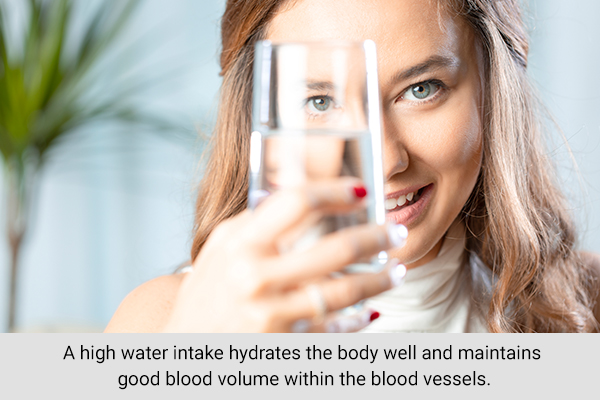
Drinking enough water (2–2.5 liters each day) is highly recommended for reducing the occurrence of postural orthostatic tachycardia syndrome. (3)
A high water intake hydrates the body well and maintains good blood volume within the blood vessels. This was demonstrated in a case study of a 24-year-old woman suffering from postural orthostatic tachycardia syndrome. Upon drinking 236 ml (or 8 ounces) of water, the symptom of dizziness immediately disappeared. (6)
This study indicates that acute water consumption can immediately lead to improved postural orthostatic tachycardia syndrome symptoms.
3. Avoiding triggers
Caffeine and alcohol consumption can worsen postural orthostatic tachycardia syndrome by causing fluid loss and creating a state of dehydration. (3)
There are some mixed reviews when it comes to the relationship between caffeine from coffee and tea and the symptoms of postural orthostatic tachycardia syndrome.
Caffeine may improve symptoms in some people but may seriously increase the risk in others. (7) Consult your doctor to identify if caffeine is a trigger for you.
Alcohol is yet another trigger for postural orthostatic tachycardia syndrome as it causes fluid loss through urine. It is generally good practice to avoid alcohol consumption. (3)
4. Exercising
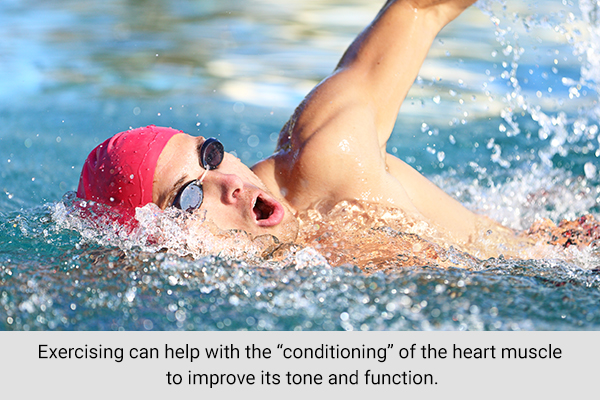
Research has shown poor muscle tone of the heart to be a major contributor to postural orthostatic tachycardia syndrome. Exercising can help with the “conditioning” of the heart muscle to improve its tone and function. (8)
In the initial stages of exercise therapy, rowing, swimming, and biking can be beneficial as they allow the patient to exercise without being in an upright position. Over time, with an improvement in tolerance and fitness level, more exercises can be incorporated that make use of standing positions. (8)
5. Implementing behavioral changes
Other helpful changes include wearing tight clothes in the lower body to avoid pooling of blood in the legs, sleeping in a position where the head is elevated, (8) avoiding standing for too long, reducing exposure to heat, and identifying drugs that may act as triggers. (3)
6. Taking medications
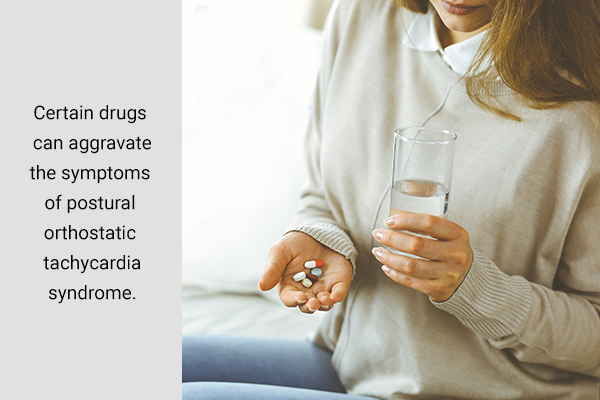
Certain drugs can aggravate the symptoms of postural orthostatic tachycardia syndrome. These include beta blockers, prescribed for hypertension, irregular heartbeat, and feeling of anxiety; diuretics; antidepressants; and other medications that regulate the heartbeat and improve psychotic disorders. (9)
It is not advisable to stop medication on your own. Speak to your doctor to come up with a treatment plan instead.
Most-Asked Questions About Postural Orthostatic Tachycardia Syndrome (POTS)
Can I make postural orthostatic tachycardia syndrome go away?
You can recover completely from postural orthostatic tachycardia syndrome by utilizing multiple things that help such as those mentioned in this article and other recommendations (mainly of medication) by your doctor.
What foods should I avoid for postural orthostatic tachycardia syndrome?

Avoid eating large meals and foods high in sugar. Blood is diverted to the digestive tract after eating, and it is recommended that you avoid doing strenuous activity after eating.
How is postural orthostatic tachycardia syndrome diagnosed?
If your heartbeat increases by 30 beats per minute after 10 minutes of standing along with experiencing other symptoms, you may want to get yourself checked for postural orthostatic tachycardia syndrome.
Your doctor may conduct certain tests to identify your symptoms and prescribe medicine and a treatment plan accordingly.
Who are at higher risk of postural orthostatic tachycardia syndrome?
There is no particular risk factor for postural orthostatic tachycardia syndrome, but it is commonly seen in girls and women between 15 and 50 years.
Is postural orthostatic tachycardia syndrome a life-threatening condition?
Postural orthostatic tachycardia syndrome is generally not life threatening. However, it is highly advisable to get yourself checked and begin a treatment plan immediately.
Final Word
Postural orthostatic tachycardia syndrome is the sudden increase in heart rate upon standing from a sitting or a laying position. It is also accompanied by dizziness, fatigue, headaches, loss of vision, fainting spells, and or gastrointestinal symptoms.
There is no exact reason for the occurrence of POTS, but dehydration, autoimmune conditions, and poor muscle tone of the heart, among others, have been associated with the condition.
Treatment begins with identifying the causes and triggers and managing them with a combination of physical therapy, medication, avoidance of triggers such as alcohol and caffeine, and making other behavioral changes.
- Was this article helpful?
- YES, THANKS!NOT REALLY


